Question: I am a 53-year-old woman. I’ve had a love of horses all my life. I had a horse for 5 months when I was 15 but that doesn’t mean I know what I’m doing, in fact just the opposite – I don’t. I recently found an abandoned year-old colt. Every day, twice a day, I go out to his very large pasture and call him by the name he’s used to. He usually always comes running to see me. I’ve only been doing this for 6 days now and I have to admit I’m nervous because he’s never been handled by anyone before and I’m new at all this and he’s new at all this too. I take out apples, carrots, bread and sugar cubes. He wants to eat and eat and I’m not sure but I think he just looks at me like the one that brings him good food but it’s working, I think. If I run along the fence he runs next to me, if I stop he stops, if I turn back he turns back with me. Once he ran ahead and couldn’t see me and came to find me. I’ve been getting into the pasture with him but again I’m really nervous but determined to make friends. He’s nervous too because he throws his head up a lot and makes this sound with his mouth like he’s tired. Today he paws the ground once and I got back in the pasture with him. He puts his ears back some times but then brings them forward too. Yesterday I was able to get a halter on him and I was so excited. It took three tries but I stood to his one side and I got it on. I went out and it’s still on. I don’t know what I’m doing to be honest but I’m hoping what I’m doing is the right things. I can’t walk through the pasture because I live in South Florida and we have a LOT of poisonous snakes and his pasture is really over grown with high grass and shrubs and it’s not safe for me to walk through that. I stand inside the gate how ever and in that very small space is where we have bonded or I hope we’ve bonded somewhat. I spend 2 hours talking to him and getting in and out of the pasture by climbing over the gate. It used to spook him but because I’m doing it so much he’s getting used to it. He’s trying to bully me for food though and maybe this is why I feel uneasy. He knows when I come I have food and he likes that. What can I do that can stop him from raising his head way over mine when I don’t give him the food and what does this mean when he’s doing this? He backs away from me too and I walk after him facing his face. If I turn around and walk away he’ll follow me though. I have gotten to pet him a lot and he almost fell asleep on me today scratching his ears. I don’t want to make mistakes that will get me kicked, or him not trusting me any more. Any suggestions would be appreciated. It has to be me doing some thing to make him raise his head way over mine and I’m short. If I bend down to pull grass, he’ll lower his head like he’s helping me. I don’t know if I’m reading this right either but he stretches out his neck as far as he can get it some times for food like he doesn’t want to come in close but I won’t give him a treat like that I make him come to me. He also wants to bite at my hand like he’s associating my hand for food. Am I making a mistake?
Answer from April Reeves: Rescuing a horse is never a mistake, but he is a colt, he is young and you are green. That is the only mistake. Unfortunately, it’s a big one, if you cannot find someone with really great credentials to help you. They need to be there physically to show you how to work with him. I can help from this end but this type of situation needs a hand that’s not afraid or lacking confidence.
Let’s go over some of the issues you have at the immediate moment.
Carrots are okay; they contain beta-carotene, a necessary part of a horse’s diet. Bread however is deadly. Sugar is as well. Trade these for apples: they change the pH levels in the hindgut and create an environment that parasites cannot grow eggs in. An apple a day goes a long way to keeping horses healthy. Simple is often better. He will need to eat grass or a quality hay 24/7. Make sure he has either at all times. And full access to clean water.
Always think, when feeding horses: Is the food indigenous to the horse (would he find it in the wild?). Horses of North America are not going to find rice, tropical fruits, bread (processed foods) in their natural habitat. While many will argue that horses are “able” to digest these, I disagree. We often use “human” reasoning to come to conclusions, but when you take a close look at an animal that’s 55 Million years old, you are not going to change that physiology and habitual structure over night, or within a few breedings. And when you consider that horses today are prone to more diseases than ever before, at alarming rates, you have to stand back and ask, with wisdom first before knowledge, why that is.
I highly recommend Marijke van de Water’s book “Healing Horses Their Way.” It’s an approach to nutrition and health you won’t get from too many vets (although this is changing, finally!). This link will take you there.
Bullying for food: horses do not have the ability to understand that “you” are “giving” the food (varies with treats). What horses know, as their language (not ours) is that they are capable of “stealing” it from you (they steal from herd members). So once they know they can steal from you, you become subservient and low on the pecking order. Not good, as a colt will take over very quickly, and yes, you will get hurt.
Biting at your hand: this is a signal to end hand feeding. Feeding by hand: not recommended at the beginning stages. Until a horse knows there is a treat at the end of a work session, it’s never a good idea to feed a horse by hand. The only time I don’t apply this rule is during some intense training situations where I need to show the horse instantly that he did a good job. Otherwise, it’s taboo with this trainer. My horses know that when the treat is gone – don’t come looking for more.
There is a system of body language (as that is the language horses recognize) that will help you. I will post the links below. It’s important you get up to speed on them, as your body language speaks volumes to a young horse.
The raising of a head over another is the sign of domination. You can stop this colt and change his attitude quickly by making yourself “bigger”. You may want to work with this around him, especially at feeding time. I always carry a horseman’s stick or a heavy buggy whip or dressage crop. When the horse starts to raise his head at all, I lift my hands up as high as they will go. If the horse is big and can get over them, I bring the stick up as far as it will go. It’s a signal that they are not as dominant as they might like to be, and it’s the beginning to setting up the relationship between you two. I work with horses up to 18HH, so I have to get pretty big sometimes! Do not move your feet: the person that moves their feet loses the battle. Stand your ground (unless he turns to kick) and keep the hands and/or the stick up higher than he can go over. Eventually, and it’s often very quick, as in hours or days, he will stop doing it, and you may notice a change in attitude.
Again, there is other hand – body language you need to learn, and the links will be posted below.
The sound he makes with his mouth is, I’m assuming, a licking and chewing sound. It’s the sound a horse makes when his brain is in thinking mode, as opposed to instinct mode. They lick and chew because the brain area that’s working releases chemicals that create the licking and chewing. It’s a sign the horse is surrendering to the situation and is processing thoughts on it. However, being young, he can shift into instinct in a split second, so this “thinking” horse is temporary until a great deal of work is done to encourage the horse to think first before reacting.
Brushing and patting and being with him are very valuable. Horses need to know you are friendly as well as dominant. Far too many “trainers” use domination as the only methodology for training, but in the wild, horses recognize this as oppressive, and will eventually avoid other horses that are purely dominant. You need to show the horse that you are the boss but a friendly boss that he can rely on and feel safe with. We have destroyed our own society by losing the balance of this, especially with our kids. Horses are the same; they need to know what those boundaries are and that they are loved as well. As long as there is love, the “tough” love is understood. When love is gone, “tough love” turns to hate.
You may want to get him crop friendly; rub him with the crop or stick or whatever you are using to make yourself “bigger”. That way he will respect the “extension of your arm” and not fear it. There is no learning when horses are in fear.
One of my favorite “languages” I use with all my horses is the “follow me” sign. I stand in front of the horse facing him, and bend down slightly. I motion my hands to come forward and slowly back away. If they are on a halter and lead, I gently comb the lead with my hand, but not pull it: it is only suggesting they come forward.
When they begin to walk forward, I continue to back for a few steps, then stand up and raise my hands, palms flat to them, in a rhythmical gesture to stop. Once they stop, I bring my hands down, pause for one second, and walk in and pat them. Then I repeat the process. There are no treats for this lesson until the very last one. Always leave the lesson with a treat with horses that are learning this. Treat, and walk away immediately. They almost always follow you, and you are setting up the precursor to being caught easily.
Using your hands in a rhythmical motion will calm most horses and get them to start the thinking process. It’s not a mechanical motion; it’s rhythm, as in a song or a dance. Many use their bodies and hands mechanically and get nowhere. But your hands are a highly tuned instrument; capable of sending information to them. We are all bodies of energy, and horses are highly sensitive to this. I believe that is our connection to them.
Once your little guy has figured out he cannot bring his head over you, you can begin to use your hands to move him. You won’t need to touch him at all: the rhythmical pressure alone will move his body.
Pinning the ears back is likely going to change once he understands who is dominant. Watch for this and make sure it stops. It’s a sign that one day you may get hurt. Ears flat back is not appropriate behavior. It’s a sign of aggression and if you don’t comply the next request from him may hurt.
Yes, horses get use to a lot of things, and one thing I do with babies is to work with them loose in a ring or paddock (or your field) and get them use to everything. Try this: take a small tarp or piece of plastic in one corner and drag it around the field (I know it’s full of tall grass right now, but in a few weeks he’ll have it done to stubble in no time). He will light up like a fuse, guaranteed, but eventually it won’t mean anything. Do not stop if he freaks, or you will train him to freak – you will be rewarding him by stopping during behavior you do not want. Only stop any action once you get behavior you DO want (Never forget those words and you will find a great deal of success with horses in everything you do).
You will have to do this for about a week or so every day, but it will work towards his mental stability and trust. Don’t try to come near him. Don’t try to do anything “with” him: just walk around everywhere with this tarp/plastic. Pay no attention to him (other than watching him out of the corner of your eye). Eventually he may wander along with you, and often I have had the little one’s jump on the tarp and play. You can leave tarps spread out in their fields as well, and once they lose their spookiness over it, you can set up their feed buckets on it. Eventually they walk on it and some even sleep on them.
You can kick balls around as well. Buy one of those really big balls and move it around. He may start to play with it on his own. I like these because it teaches babies the mechanics of their own bodies. They need to run, jump and rear, and use their legs as much as possible.
The halter idea was a good instinct on your part. What you need to do is to take it on and off and not leave it on if you can help it. He may get it caught on something. What you must avoid is trying to “hold” him in place, as he will not understand that and you will have one big battle on your hands and lose the trust. Once he is really good at this, I leave a short lead line on it for a few days – one that’s long enough for him to step on with his front legs but not his back legs. Once he’s comfortable with that, you can put a longer one on and he will get use to ropes around his back legs. Just another way to get a horse to teach themselves – I call it “setting them up to be responsible”! Plus, this work will set him up for tying one day, as they eventually learn not to pull the rope when they step on it, but instead figure out what foot is on the rope, and either remove that foot or move away. But they quit fighting, and that is the point of the lesson.
The links to other articles that may help you are:
This post has a lot of groundwork information that may help: https://aprilreeveshorsetraining.wordpress.com/2008/12/08/groundwork-saddle-work-herd-bound-horse/
Interesting article on energy and “feeling” as it pertains to training: https://aprilreeveshorsetraining.wordpress.com/2009/04/04/important-training-technique-horse/
How to move a horses shoulder away: advanced but interesting: https://aprilreeveshorsetraining.wordpress.com/2010/01/12/how-to-get-horse-to-move-shoulder/
I hope you stick with your little colt and move through the process together, with help. He chose you for a reason, and your learning curve just went through the sky, but don’t fear those things. You are never given more than you can handle, I believe, and it sounds as if you are compassionate and loving. Those ingredients alone within the human heart can move mountains.


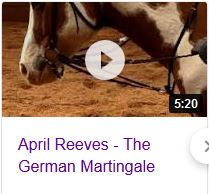
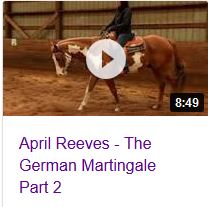
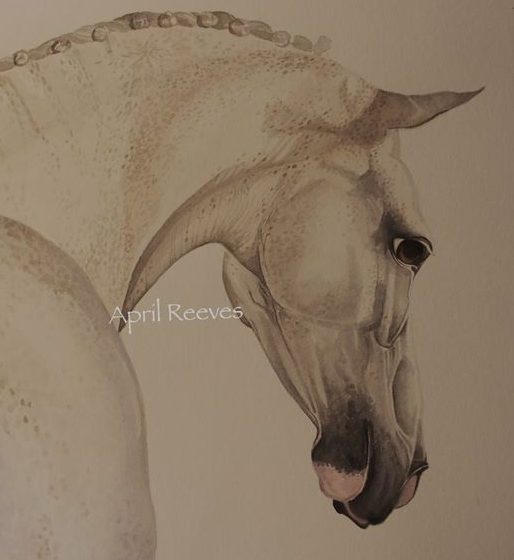

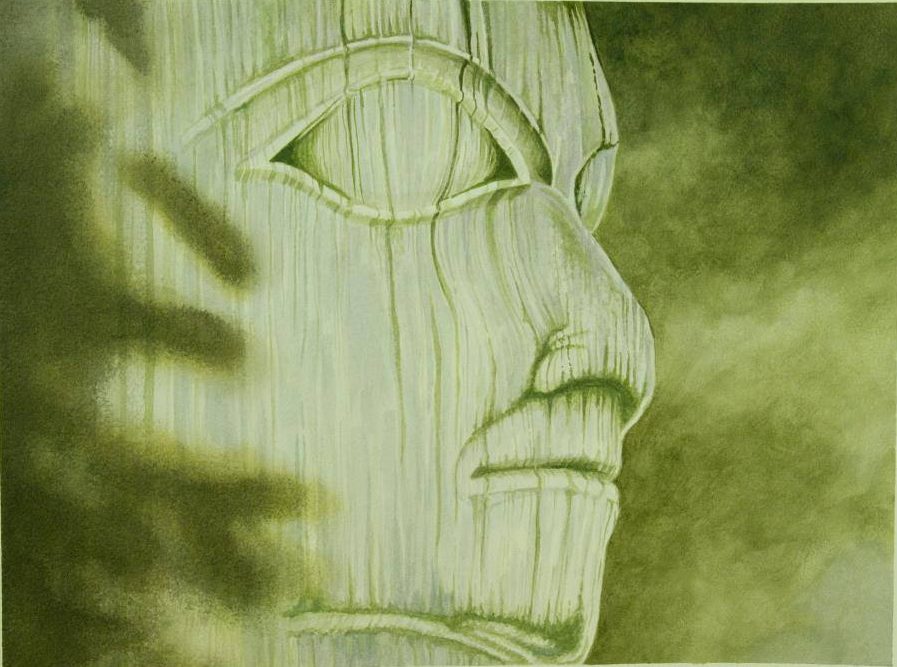
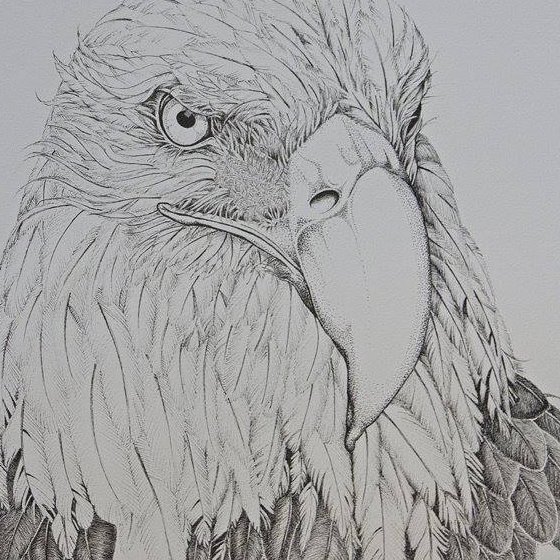




I have a news update. I found the man who owns the colt and he said he doesn’t want him and gave him to me. The man said he will work with me and the horse and train us both as that’s what he does. I videoed the capture of the horse whom for now I have named Hadnon which means untouched and untamed and is greek. We took my horse back to his house where he unloaded him into a smaller pasture. He has about 8 other horses 3 of which are champion stallion quarter horses and are huge. Hadnon was able to stretch his neck to reach some of the other horses but ended up biting them. In return I think he was nipped a few times.
The next day I went and bought sweet feed, beet paulp and a large round bale of hay for him. I was in with him feeding and petting him and he was doing great. I had his scent all over me. As the man was unloading the bale of hay his one stallion whinned to me so I walked over. I gently stroked the side of his neck and his body launguage was relaxed and calm. The stallion rested his large head on my shoulder and I thought nothing of this as my young stallion does that and all is fine. The next thing I knew was this massive stallion was biting into my breast and pulling. Our natural instinct is to pull away from pain and run and that’s what I did, as I stepped back away from the horse my ankle snapped and I went down. I ended up breaking my ankle is three places, my fibulia was completely broken away from the metatarsal, my tibia was fractured and a piece of bone broken out of it. I ended up in surgery three days later with a plate and screws and pins in my ankle and fibulia. I am in a boot and can not bare any weight on my leg for the next 3 weeks. I look back all the time thinking what happened to cause that horse to bite me, I did nothing to cause him to do that and the only conclussion I could come up with is my boy is a stallion and new there. I had his scent all over my hands and shirt. Perhaps he smelled me and mistook me for my young boy or thought I was a threat to his domain. I have not seen my hadnon in weeks and can’t get out for weeks more to come. The man put him into another pasture until I can come back and we can begin training. I now have ring worm from his bite and it wasn’t a little nibble, this was a full hard full mouth bite. You could see the entire teeth inprint in my skin for a week. I’m still bruised weeks later and never want to get biten again. I miss my hadnon
Dear Hadnon’s mummy
So I just came across your letter and reply.
I hope you are healing well by now and have found the courage to continue with your new little friend?
I bet Hadnon missed you too! What a lovely story apart from the injuries you suffered. You sound such a wonderful kind person. Is there an update on Hadnon?